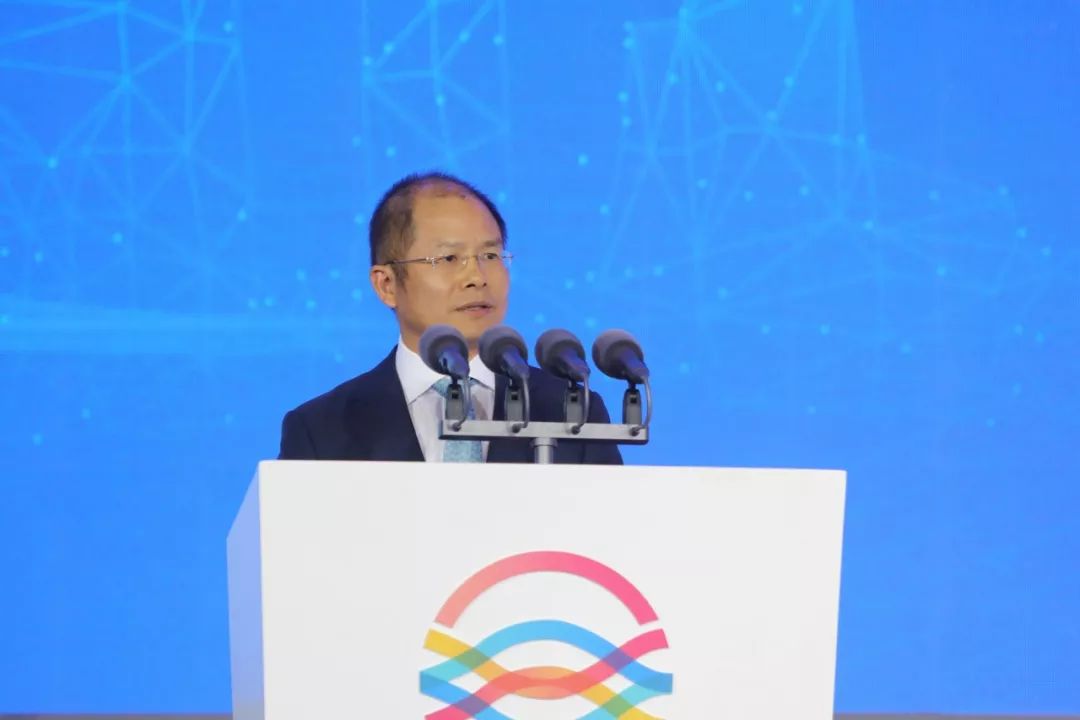On October 22nd, Xu Zhijun, Huawei’s rotating chairman, delivered a keynote speech titled “ICT Empowers Automakers to Build Good Cars and Make Cars Better” at the World Intelligent Connected Vehicles Conference.
Since announcing its smart car strategy at the Shanghai Auto Show on April 17th, Huawei has been active in the field.
On May 29th, Ren Zhengfei signed Huawei’s document No. 223, officially establishing the Intelligent Automotive Solution Business Unit (BU). The Intelligent Automotive Solution BU, along with the Network Products and Solutions BU, the Cloud & AI Products and Services BU, as well as Huawei’s Carrier BG, Enterprise BG, and Consumer BG, forms Huawei’s six primary departments, with the President of the Intelligent Automotive BU reporting directly to Ren Zhengfei.
According to the document signed by Ren Zhengfei, the Intelligent Automotive Business Unit is positioned to “provide ICT components and solutions for smart cars, helping automakers build good cars,” which is consistent with the positioning mentioned in Xu Zhijun’s speeches on April 17th and October 22nd. From this perspective, once Huawei’s strategy is established, the BU will carry out the implementation decisively.
However, in my opinion, the broad definition of ICT (Information and Communication Technology) components and solutions provides Huawei’s Intelligent Automotive BU with considerable flexibility and adjustment space regarding specific execution. For example, Huawei has made significant adjustments to its PPT presentations regarding the specific business of the Intelligent Automotive BU, that is, what Huawei will actually do.
Moving forward, let’s take a closer look at the following:
Cloud Services
Added OceanConnect vehicle networking access and entertainment services.As early as the 2018 International Consumer Electronics Information and Communication Expo (CEBIT 2018), Huawei had already released its OceanConnect Connected Car Services. Prior to the release of this service, Huawei had already entered into a partnership with French automaker PSA Group to construct the world’s largest pre-installed connected car project. The first car model based on Huawei’s OceanConnect Connected Car Platform, the DS7, has already been released in Europe and China.
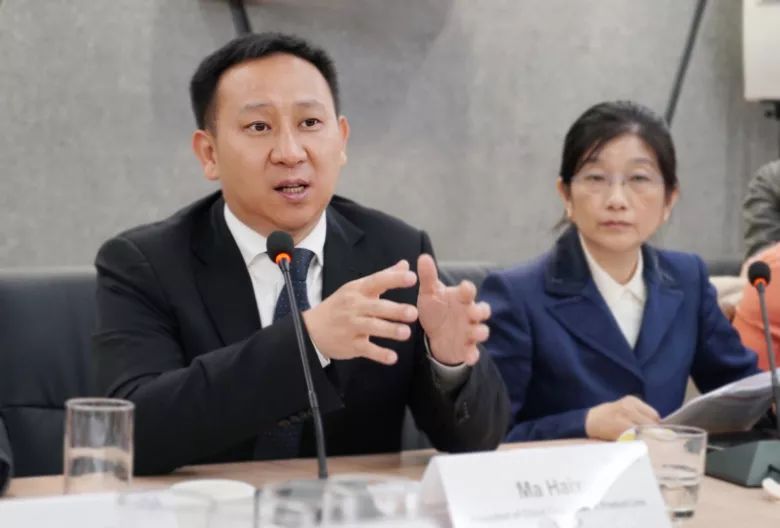
Huawei’s Ma Haixu announcing the OceanConnect Connected Car Platform
From this perspective, the separation of the OceanConnect Connected Car Business from Huawei’s cloud core network product line and its integration into the Intelligent Car Business Unit is part of Huawei’s latest organizational restructuring, which aims to consolidate and integrate all intelligent car-related businesses and actions under one unified interface.
The “Entertainment Business” mentioned here is the first time that Huawei has publicly revealed this business component. However, Xu Zhijun did not elaborate further on this business during his speech. From what can be inferred from the text, Huawei seems to want to build its proprietary content and service ecosystem on top of the OceanConnect Connected Car Platform, with the goal of directly competing with other connected car platforms such as Ali’s Banma, Tencent’s Connected Car, Baidu’s Connected Car, Botai and Siwei Zhilian.
Intelligent Driving
Introducing LiDAR and mmWave Radar
During his speech, Xu Zhijun stated: Huawei will also use its 5G technology to develop mmWave radar for all-weather imaging, and we will also fully utilize globally leading optoelectronic technology to develop LiDAR, which will truly solve the cost and performance issues currently facing LiDAR technology.
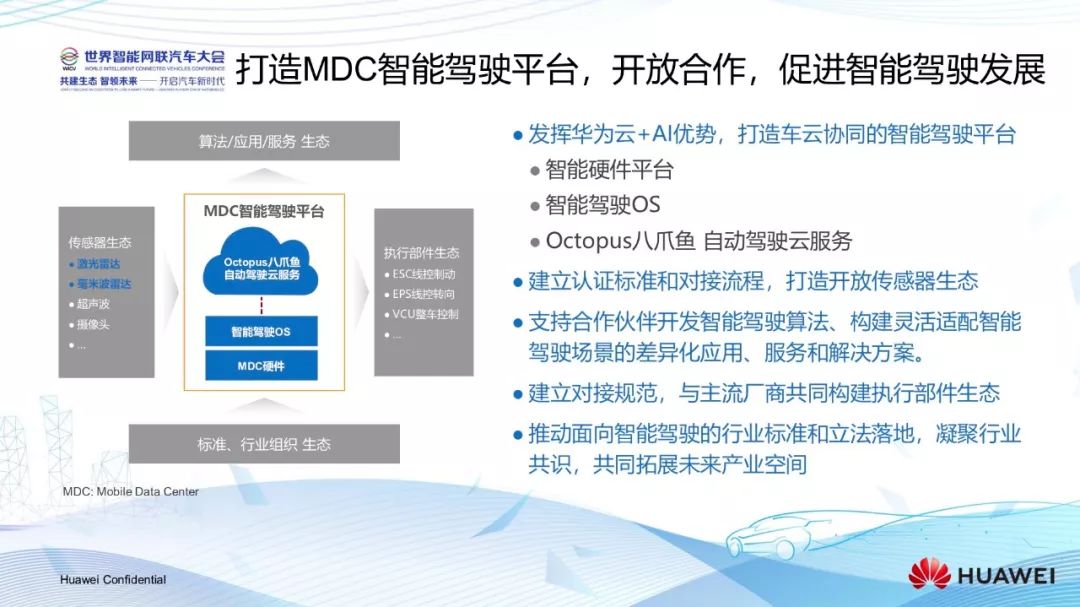
This marks a major adjustment to Huawei’s strategic layout in HC 2019. At HC 2019, Huawei clearly defined its “division of labor” plan in the field of intelligent cars:
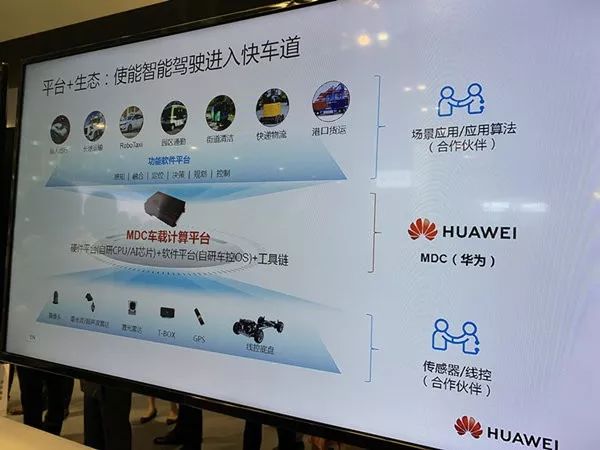
- Partner: Upper-layer scenario applications/Application algorithms
- Huawei: Middleware hardware platform (self-developed CPU/AI chips) + software platform (self-developed car control OS) + toolchain* Partnerships: Underlying sensors/wire control (cameras, millimeter wave/ultrasonic radars, laser radars, T-BOX, GPS, wire control chassis)
What advantages does Huawei have in developing millimeter wave radar?
After long-term technological development and evolution, the global millimeter wave radar field has basically formed a situation of ABCD (Autoliv, Bosch, Continental, and Delphi) domination, which is not friendly to new players.
However, millimeter wave radar does have inherent problems. Even the highest frequency 77G millimeter wave radar still has low resolution, which not only cannot accurately model pedestrians and obstacles, but also the raw data of millimeter wave radar is not friendly enough for sensor fusion and synchronization, AI algorithm processing.
As an example, Tesla has applied one of the best millimeter wave radars on the market, the Continental ARS410 CV 77G radar, on its Autopilot 2.5/3.0 models. On the other hand, Pete Bannon, the vice president of Autopilot hardware, is leading a team to develop high-resolution imaging radar.
One can say that high-resolution imaging radar is one of the technological trends in the millimeter wave radar field. Xu Zhijun has not revealed Huawei’s specific technical implementation route. What kind of imagination will emerge from “using its own 5G technology to develop”? Let us wait and see.
Intelligent Network Connection
Addition of Ethernet Gateway (Central and Distributed)
Considering Huawei’s background, the addition of an Ethernet gateway is not surprising.
From a hardware perspective, the gateway is the core component of the entire vehicle’s electronic and electrical architecture. From a data perspective, the gateway is the neural center that connects all the buses, realizing the interoperability of various domains in the entire vehicle, network management, and fault diagnosis. In the era of intelligent automobiles, the importance of the gateway is becoming more and more prominent.
In short, if you define the entire vehicle’s electronic and electrical architecture, configuration of the gateway is a matter of course. Typical intelligent automobile companies such as Tesla and NIO have independently developed gateways to match their electronic and electrical architecture needs.
So how does Huawei think about the entire vehicle’s electronic and electrical architecture?
Xu Zhijun believes that “From traditional cars to intelligent connected cars, a change in architecture must be made.” The traditional E/E architecture is a bus plus decentralized control architecture with hundreds of controllers on a single vehicle. However, to move towards intelligent connected cars, we should fully integrate the achievements and accumulation of ICT technology developments over the past few decades, and build a distributed Ethernet network + three domain controllers architecture, realizing a software-defined car, and continuously improving the consumer experience.
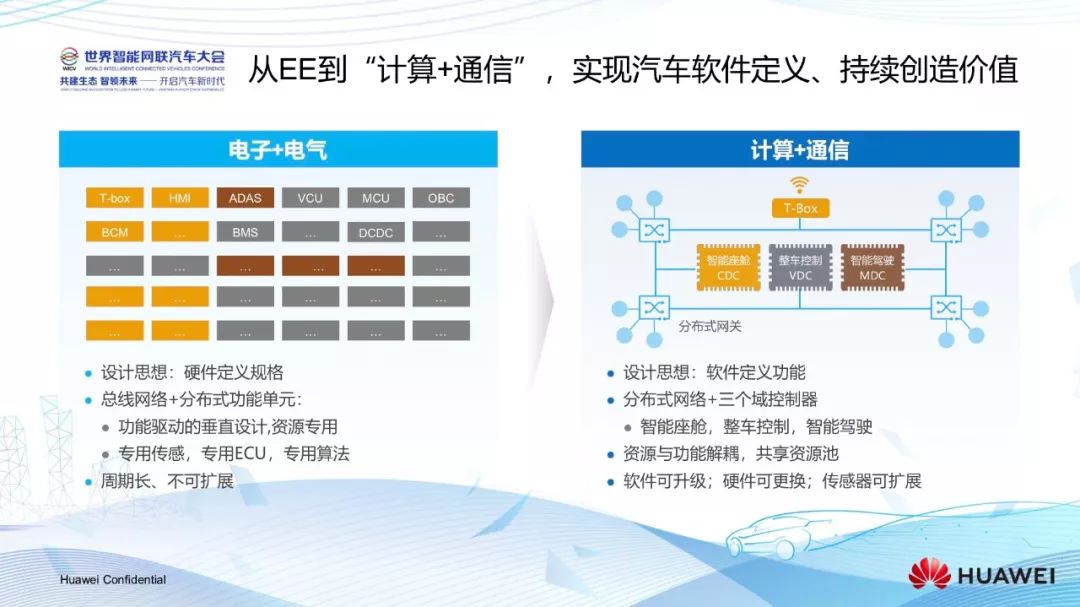
Software-defined Functionality: The Consistent Design Philosophy Shared with Tesla’s Andvanced Ideas
From a presentation PPT perspective, software-defined functionality, hardware-software decoupling, resource sharing, upgradeable software, and replaceable hardware are completely consistent with the design philosophy of Tesla, the radical pioneer in the smart car industry.
For example, Tesla’s latest generation of electronic and electrical architecture, installed in Model 3, integrates Advanced Driver Assistance System(ADAS) and In-Vehicle Infotainment(IVI) into the Central Computing Module (CCM), along with the Left Body Control Module (BCM-LH) and Right Body Control Module (BCM-RH). It thoroughly replaces the previous complex architecture consisting of over 100 ECU controllers and wiring harnesses.
In addition to Tesla, Volkswagen Group in Germany is also undergoing a massive electrification transformation. It aims to achieve the goal of simplifying electronic and electrical architecture and defining software cars by acquiring software suppliers and setting up massive independent software teams internally.
Huawei has complemented the layout of automotive electrification by integrating high-performance electronic and electrical architecture with Ethernet Gateway.
Intelligent Connected Board
Upgrading to Intelligent Cockpit
Intelligent cockpit is the biggest business of Huawei Intelligent Automotive BU adjustment. The core of the business, promoted at the Shanghai auto show, the phone mapping solution HiCar, was replaced by the CDC Intelligent Cockpit Platform.
HiCar
CDC, Cockpit Data Center, is the cockpit data center. In short, Huawei’s idea is to incorporate the entire OS into the car console, just like a newly established car company rather than building a Chinese version of CarPlay.
What is the difference between these two?
HiCar hopes to rely on the mature and powerful software and hardware ecology of smartphones and mobile internet to achieve the transition of high-quality user experience from the mobile phone terminal to the car machine terminal, including resource sharing such as stronger AI computing power (relative to the car), better communication antennas, etc. However, the biggest problem with this approach is that it still centers on the phone, and all data resulting from the intelligent car ecosystem can only be established by relying on the intelligent phone ecosystem.
CDC Intelligent Cockpit is based on an independent software and hardware system, including HarmonyOS, App ecology, Kirin vehicle chips, screens, microphones, and speakers, to establish a data center primarily for automotive scenarios. Independent account systems, cloud services, and whole vehicle OTA capabilities are necessary for intelligent cockpit in cars.
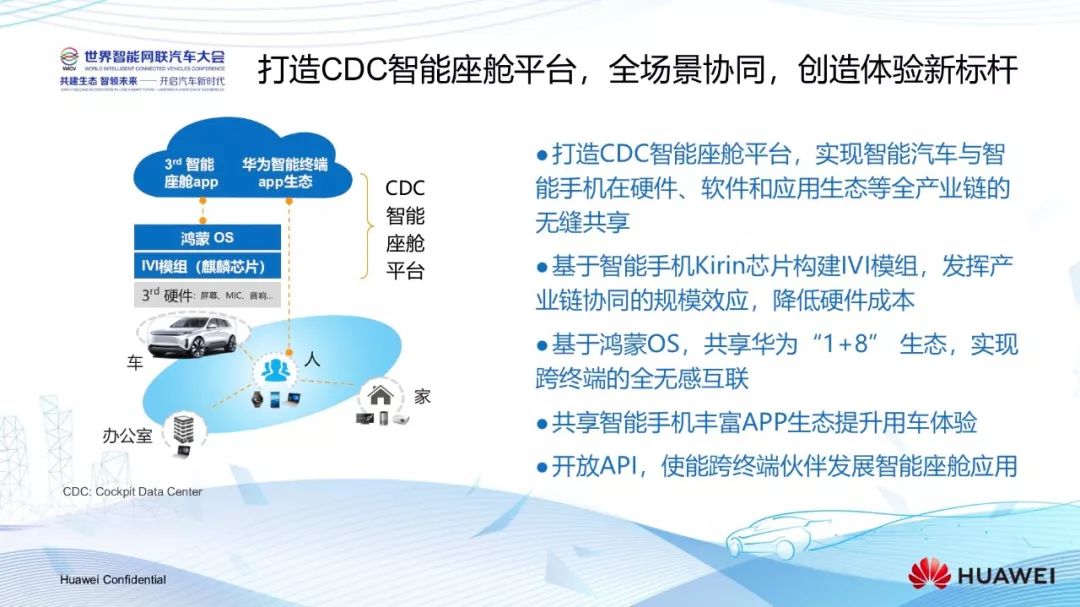 ## Intelligent Energy Panel
## Intelligent Energy Panel
Updated to Intelligent Electric Panel
In addition to the original multi-mode electric drive, charging, and battery management system, a new VDC vehicle control platform has been added to the intelligent electric panel. This business has gone through a major transformation since Xu Zhijun’s comment on electric drive technology, “it is not clear now.”
So what is the VDC vehicle control platform?
From the three electric system involving TMS, BMS, VCU to the vehicle control OS, hardware and high-voltage power electronic devices needed by VDC, on-board charging components, and even steering and braking… all packaged and integrated for release.
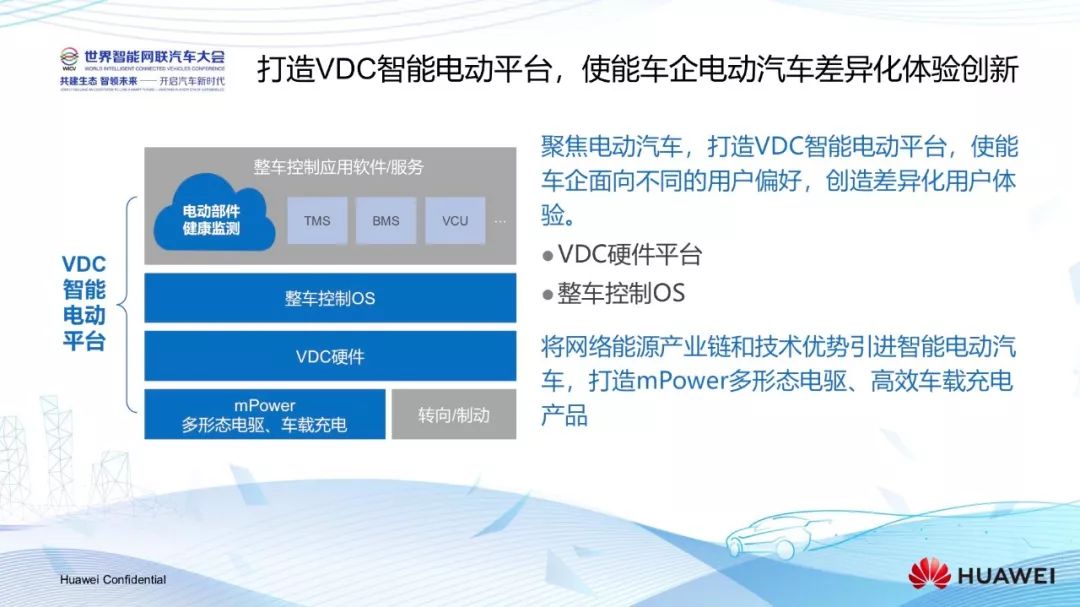
At this point, Huawei has already broken Xu Zhijun’s belief that “we don’t do any parts of traditional cars”. In fact, Huawei Intelligent Automotive BU’s positioning as “an incremental component supplier to intelligent connected car enterprises” has become even more intriguing.
“To intelligent connected car companies as an incremental component supplier”, this is a powerful outsider entering an industry with a very high threshold, a gentle positioning.
But the truth is: Huawei’s intelligent driving, intelligent connectedness, intelligent cabin, intelligent electric, cloud services are directly competing with Tier 1/Tier 2 and even OEMs in the automotive industry.
With intelligent cars becoming the trend, Huawei’s goal for the Intelligent Automotive BU is to become the Bosch of China.
Huawei has already entered so many core technology areas in the automotive industry and has been “fickle” and “scientific” in its strategy, so why not build cars?
This is a good question.
The founder of Ideal Car, Li Xiang, once said, “60-70% of the technology in the automotive industry is in the hands of Bosch, and if it goes IPO, its market capitalization may be much higher than Toyota’s.” Considering that the automotive industry is rapidly moving towards intelligence and electrification, and Huawei has a strong technology and talent reserve in these two areas, it can be said that if Huawei can replicate the success of the communications industry in the automotive industry, it will surely capture the part of the automotive industry chain with the highest added value.On the other hand, just now, Huawei’s official Weibo account for smartphones announced that the global shipments in 2019 exceeded 200 million units. Despite the well-known adverse factors this year, Huawei still achieved high-speed growth in its consumer BG performance. 10 years ago, Huawei’s consumer business was zero.
This indicates that the so-called 2B, 2C gene theory is not worth mentioning in the face of Huawei’s strong organizational error correction ability and corporate culture.
Whether Huawei manufactures cars or not, all automotive OEMs and Tier 1s should be alert. From capital, talent, technology, and organization, this outsider seems to have all the capabilities to build cars. Does it make a difference if it builds cars or not?
Attached: Full text of Xu Zhijun’s speech.
Ladies and gentlemen, good afternoon!
It is a great honor to attend the World Intelligent Connected Vehicles Conference. I would like to take this opportunity to share how Huawei focuses on ICT technology to enable automakers to build good cars and create value for the industry.
I spoke at the Shanghai Auto Show on April 17th, and I said that with the deep integration of automotive and information and communication technology, intelligent connected electric vehicles have become a revolutionary development engine for human society, with far-reaching impact beyond the two industries themselves. Intelligent connected vehicles will bring huge changes to human society, the automotive industry, and human mobility, mainly in five areas:
First, intelligent connected vehicles will become a platform for continuous value creation. After traditional phones evolved into smartphones, smartphones have become a platform for continuous value creation for the entire industry. We are pleased to see that once cars evolve from traditional cars to intelligent connected vehicles, they will also become a platform for continuous value creation for the industry throughout the entire lifecycle of the vehicle, continuously improving the consumer experience.
Second, the entire society in the future should combine cars with travel services.
Third, anyone who owns a car knows that we hate entertainment systems in cars that haven’t changed in decades. I believe that the intelligent cockpit in the automotive field, as well as other systems, should be integrated with the industry chain and ecology of the rapidly developing intelligent terminals we have today. That is, bring the mobile phone experience to the car and bring the hardware ecosystem and application ecosystem of the mobile phone into the intelligent cockpit.
Fourth, traditional cars are based on the E/E architecture, that is, the bus+decentralized control architecture. We believe that to move towards intelligent connected vehicles, it should be a distributed network + domain controller architecture.## Fifth, after being connected, cars are no longer isolated mechanical objects, but a type of network terminal, naturally facing network security and information security issues. Therefore, the concept of car safety needs to move from traditional safety to trustworthiness.
With the trend of the integration of the ICT industry and the automotive industry, Huawei has been exploring how to leverage its technical strengths in the ICT industry to promote the transformation of the traditional automotive industry to intelligent connected vehicles for the past four to five years. After several years of exploration, we have clarified our strategic choice: Huawei will not build cars, but will focus on ICT technology, become an incremental component supplier for intelligent connected vehicles, and help car companies “build good cars”.
To implement this strategy, on May 29th, Huawei officially established the Intelligent Automotive Solution BU to execute the strategy for intelligent connected vehicles. At the same time, we further planned solutions for intelligent connected vehicles, including five aspects: first, the most traditional intelligent connected vehicles, how to connect cars with cloud, cars with cars, cars with things, and cars with surroundings. Second, intelligent driving. Third, intelligent cabin. Fourth, intelligent electric. Fifth, we provide a series of cloud services to help car companies develop innovation and support travel services. Mainly to help car companies build good cars in these five directions.
First, in order to move from traditional cars to intelligent connected vehicles, architectural changes must be made. The traditional E/E architecture is a bus plus decentralized control architecture, with hundreds of controllers in a car. However, to move toward intelligent connected vehicles, we should fully integrate the achievements and accumulation gained by ICT technology’s decades of development, and adopt the architecture of a distributed Ethernet network plus three domain controllers to realize software-defined cars and continuously improve the consumer experience. In this way, continuous value creation can be achieved through software upgrades or hardware replacement during the lifespan of the car. As we all know, following Moore’s Law, the electronic industry’s technology rapidly progresses, and the cost also decreases rapidly.
Here I share Huawei’s approaches in several specific directions:
In the first direction, we want to create an MDC intelligent driving platform. Through this platform, we will establish a broad ecosystem to ultimately promote the digitization of the entire automobile industry through open cooperation. Our biggest advantages are the AI capabilities and cloud capabilities. By building an MDC intelligent driving platform based on Huawei’s Ascend chips, plus intelligent driving operating systems and autonomous driving cloud services, we can open up APIs through the platform and work together with partners such as component providers, integrators, and application developers to jointly build three ecosystems:One of the directions is the sensor ecosystem, including LiDARs, millimeter-wave radars, cameras, etc., making it easy to connect these sensors with MDC. As one of the options, Huawei will also use its own 5G technology to develop millimeter-wave radars, achieving all-weather imaging. At the same time, we will fully leverage the world’s leading optoelectronic technology to develop LiDARs, truly solving the cost and performance issues faced by LiDARs.
The second direction is the intelligent driving application ecosystem. We hope to build an algorithm and application ecosystem based on MDC, so that our partners can develop intelligent driving applications and algorithms based on MDC to continuously provide innovative intelligent driving functions and services to the automotive industry.
Thirdly, we connect MDC with various actuators, creating standards for interfaces to make it easy for MDC to cooperate with all actuators. In addition, we face a series of legal, regulatory, policy, and standard issues and challenges. Therefore, we hope to establish a wide ecological alliance to promote the establishment of standards, reach a consensus, and promote the entire automotive industry towards automation, truly achieving complete autonomous driving.
The second direction is to create an intelligent cabin platform. Our core philosophy is to combine the intelligent cabin platform with the entire intelligent terminal ecosystem. We have a large number of smartphone users in China and globally, and the entire industry has established a broad intelligent terminal ecosystem, truly achieving scale and low cost. The intelligent cabin is in the car, and we believe that the intelligent terminal hardware ecosystem, software ecosystem, and application ecosystem should be introduced into the intelligent cabin.
Huawei will build an intelligent cabin platform based on the smartphone Kirin chip and HarmonyOS. We hope to build an ecosystem for the intelligent cabin based on this platform, where future hardware is replaceable, applications are constantly updated, and software is continually upgraded.
The third direction is to build an intelligent electric platform, to create a differentiated experience for automakers in electric vehicles. We develop an MCU and use it to build a whole-vehicle control operating system. Based on this operating system, it can be open to all automakers to constantly improve user experience. All automakers based on the VDC platform will be able to better control the whole vehicle’s differences.
At the same time, with its $5B scale in the energy industry, Huawei fully utilizes the scale and consistency of energy equipment to reduce the cost of electrification and solve the cost and performance issues of charging, electric propulsion, and battery management.
Finally, connection. We hope to connect vehicles with roads and connect vehicles with other vehicles through the technology of 4G, 5G, and V2X. At the same time, through cloud services, we can effectively manage all connected vehicles, creating an ecosystem that connects all vehicles.We hope to apply the ICT technology accumulated over the years to the intelligent connected vehicle industry, focusing on intelligent cockpit, intelligent driving, intelligent connectivity, intelligent electric and related cloud services, truly assisting automakers to quickly manufacture intelligent connected vehicles, becoming an incremental component supplier to truly intelligent connected vehicle companies, helping our partners to manufacture good cars.
Thank you all!
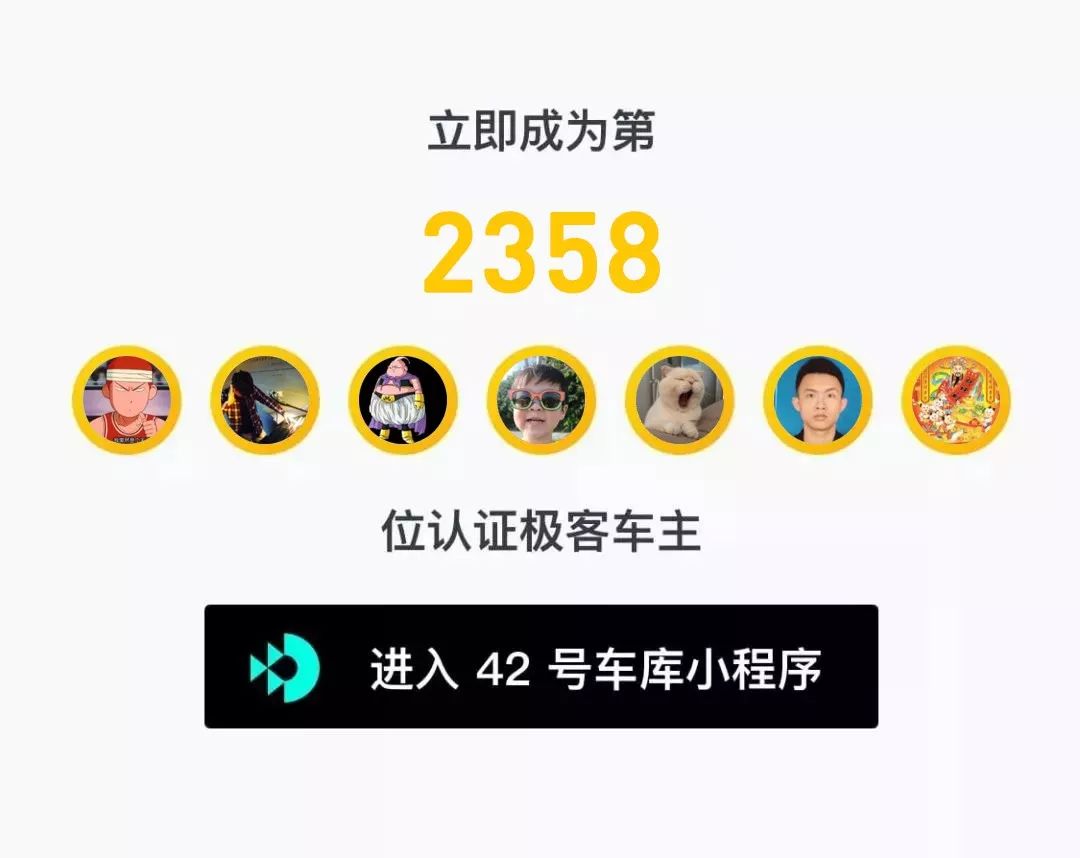


This article is a translation by ChatGPT of a Chinese report from 42HOW. If you have any questions about it, please email bd@42how.com.
